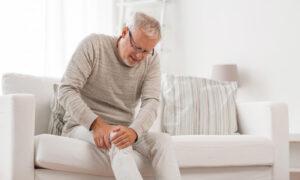Do your knees cry out in pain when going up or down staircases or slopes? Unless it’s a problem with your innate skeletal structure or an accidental impact suffered in the past, the pain is likely related to improper use of muscles, adhesion of the fascia, or both. Dr. Chen Chao-long from Taiwan We Care Traditional Chinese Medicine Clinic explains the concept of knee health.
What Is Fascial Adhesion?
Fascia is the key material that connects all of the body’s soft tissues, such as tendons, ligaments, and muscles. Fascia itself is also a connection that is rigid yet elastic. It’s found all over the body, from head to toe. The two most common causes of fascia injuries are muscle overuse and injuries due to external impact.Like all other things, any damaged parts must be repaired, and the repair process will inevitably produce scars. Fascia is like cloth fibers. When the tissue repairs itself after it is torn, the “suture” of the “patch” is called an adhesion or scar.
When injuries and scars occur because of improper use of muscles, and if the scars aren’t treated in a timely fashion, the degree of adhesion will become increasingly apparent. Adhesion will lead to poor circulation of blood vessels and weakening of nerve signal transmission, thus affecting physiological functions and causing pain.
Exercise to Prevent Knee Pain
Dr. Chen said that for knee pain, we must achieve skeletal restoration first. Resolving skeletal dislocation can immediately reduce the pain, but it’s also critical to use the muscles around the knee correctly. The muscles involved are the quadriceps, hamstrings, popliteus, and gastrocnemius. Most people experience pain above the knee when going upstairs or climbing a slope and pain below the knee when going down a slope. All this pain is caused by the overuse of untrained quadriceps, so proper quadriceps training is essential, Dr. Chen said.The action of going up and down the staircase requires muscles such as the gluteal muscles and hamstrings to work in harmony. After the quadriceps, the second largest and most powerful muscle in the human body is the gluteal muscle. If you can properly use your gluteal muscles in climbing stairs, you can reduce the pressure on your quadriceps and knees. When going up, try to avoid using your quadriceps alone. Instead of using your hip joints to move your foot to the next stair, try using the gluteal muscles instead to push forward in going up.
Three Ways to Reinforce the Gluteal Muscles
1. Opening and Closing a Resistance Band While Sitting
- Sit firmly on a chair.
- Place a resistance band around your thighs.
- Lean forward about 45 degrees.
- Straighten your upper body.
- Slowly open and close your legs.

2. Split-leg Squat
Stand with one foot forward and one behind, with your knees slightly bent. With gravity primarily on your front foot, tighten your trunk, straighten your upper body, push your rear end back, and bend your body forward. Do the same for the other foot. Repeat 15–20 times as one set, three times a day. You can combine these with arm swings.
3. Glute Bridge Opening and Closing
With a resistance band around your thighs, lie flat on your back in a bridge posture, inhale, then lift and open your legs while exhaling. Bring your legs together when moving back down. Repeat 15–20 times as one set, three times a day. Soreness of the muscles is natural and means you’re doing the work!
In addition to exercise, Dr. Chen reminds us to avoid squatting, kneeling, or sitting on the ground or low benches for prolonged periods during the day and to perform more muscle stretching instead to relax the tense quadriceps, hamstrings, and popliteus muscles. Only by using the muscles properly can you reduce the risk of knee pain and discomfort.







